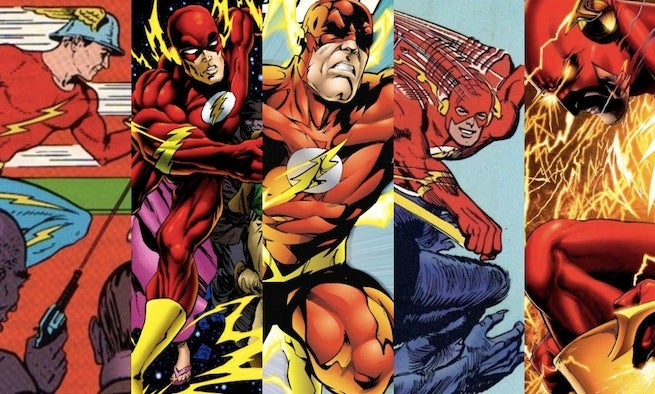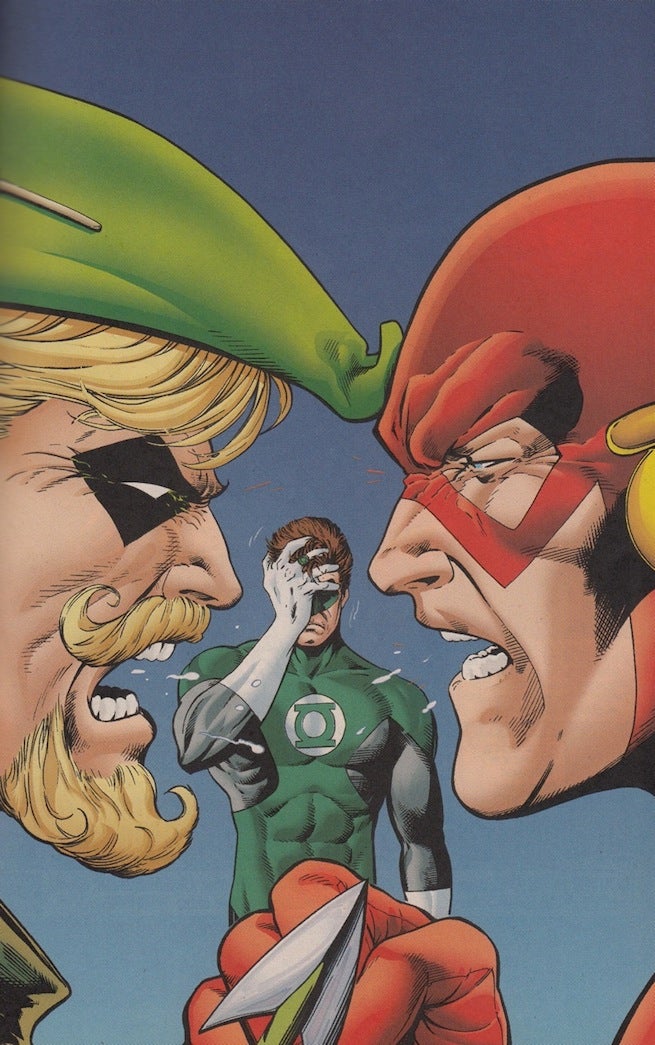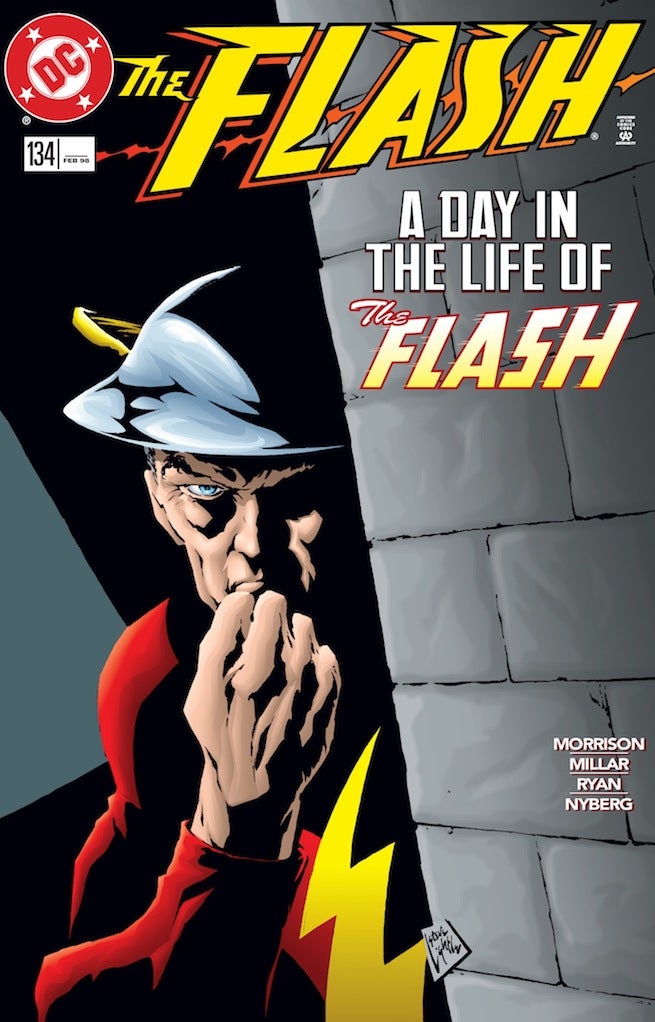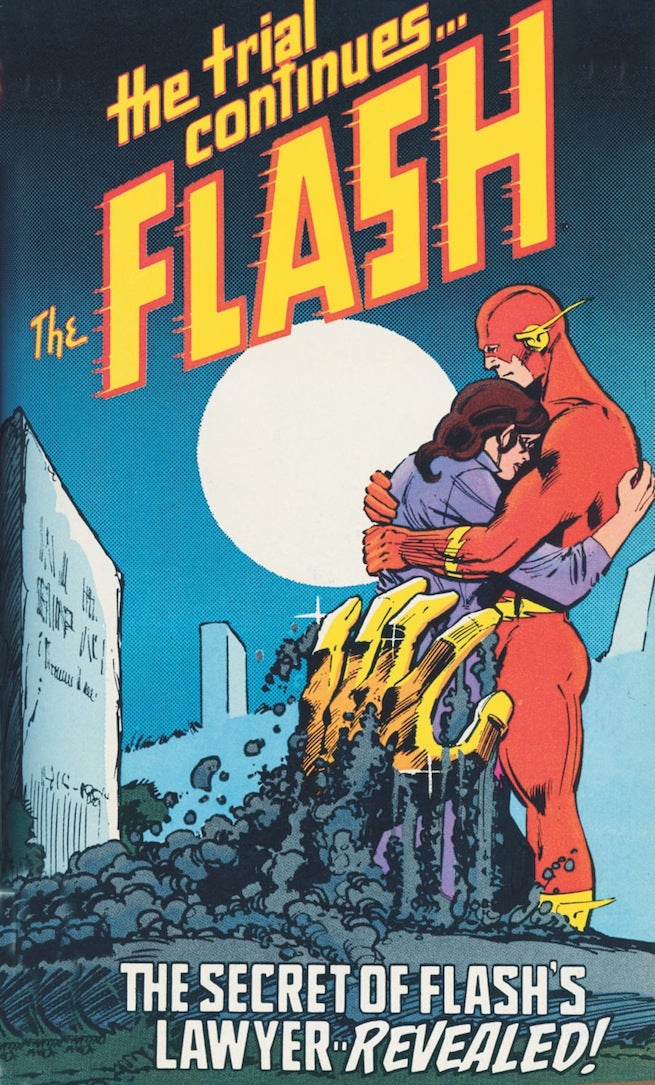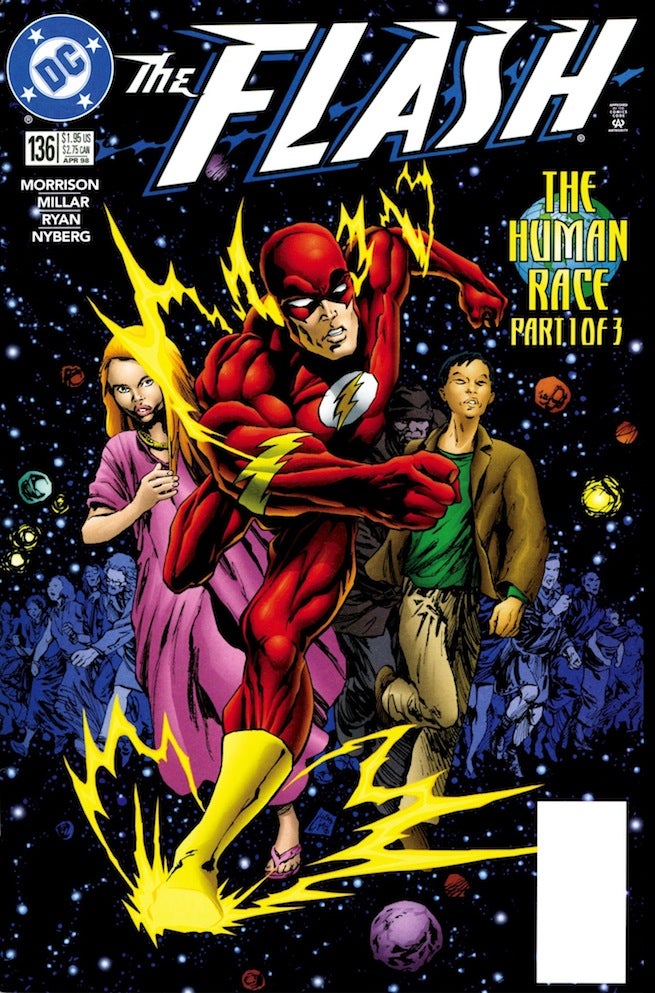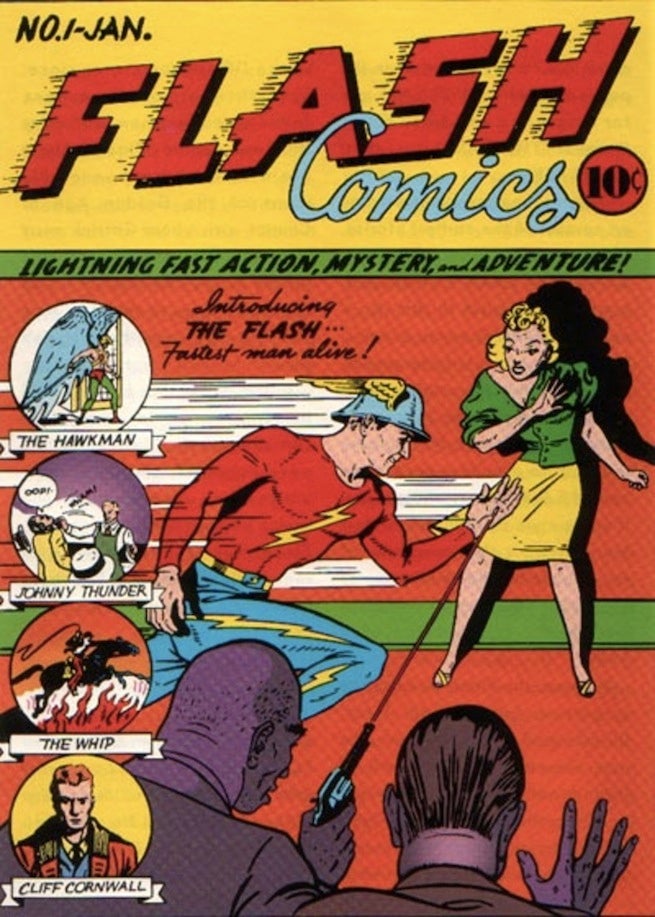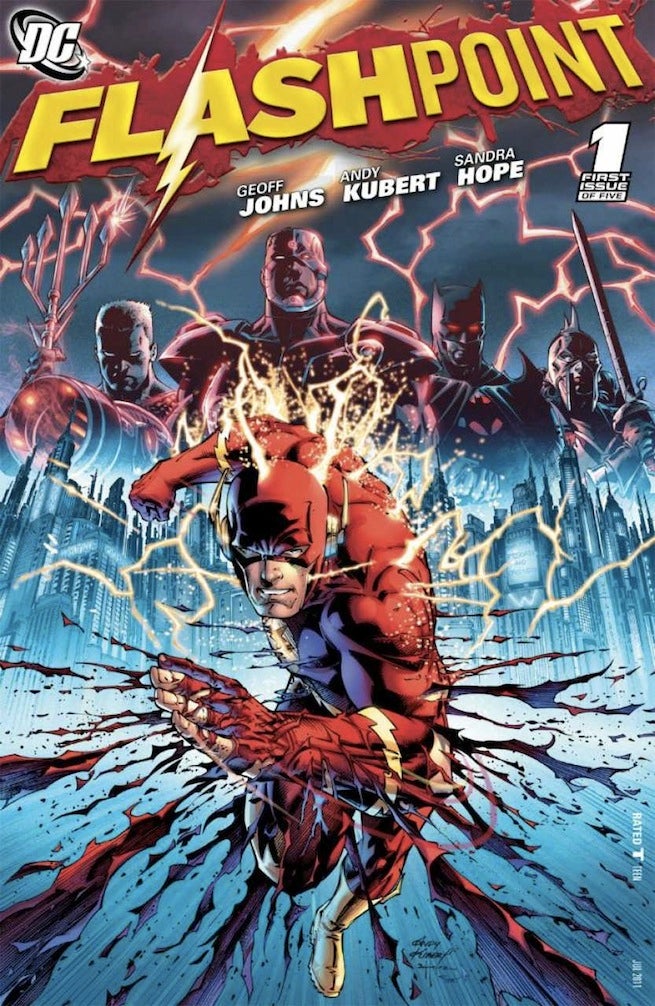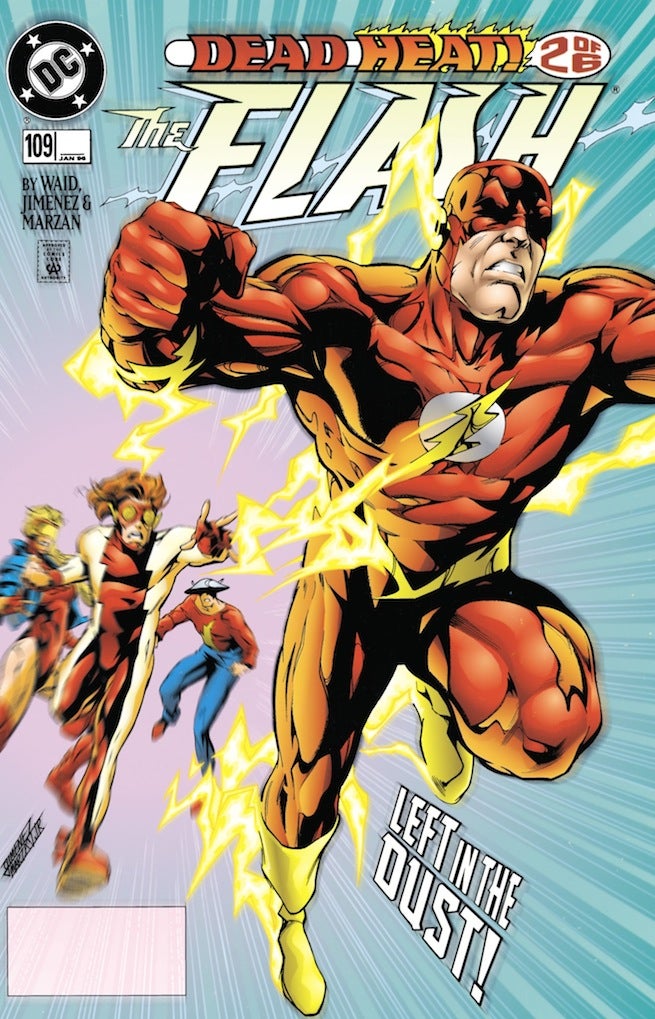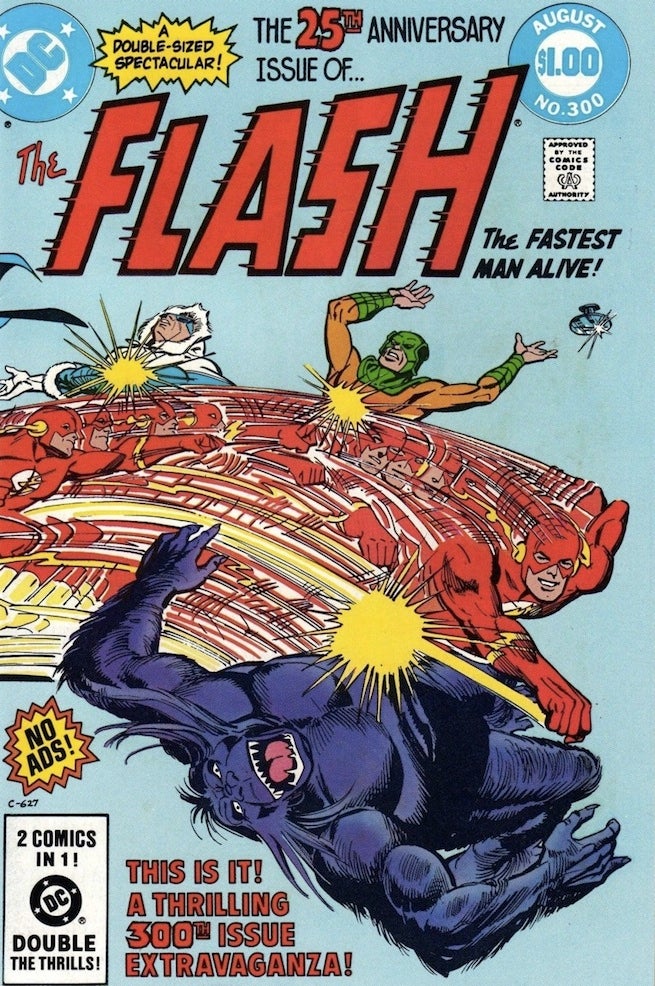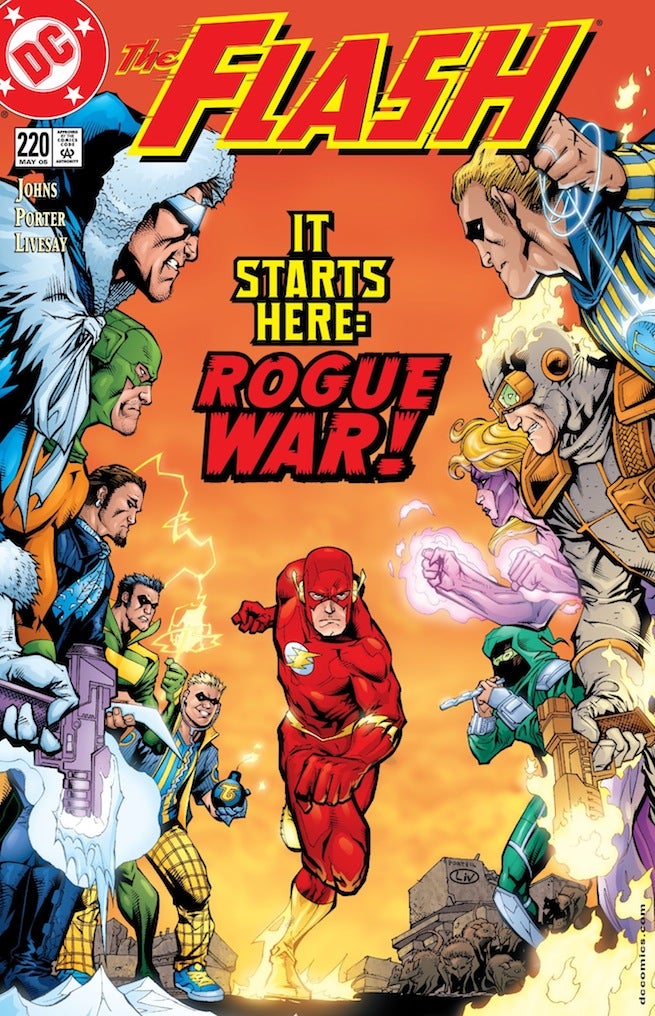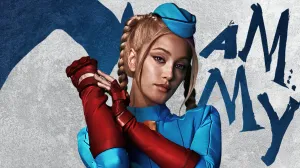This month marks the 75th anniversary of the publication of Flash Comics #1, the first appearance of Jay Garrick, aka, the Golden Age Flash. In the years that have followed, the Flash has grown into one of the comic book industry’s most iconic superheroes. With CW’s The Flash returning from its mid-season hiatus this week, we thought the time was appropriate to celebrate some of the greatest Flash stories of all time. We considered all eras and all iterations of the Flash – Garrick, Barry Allen and Wally West – along with some of the appropriate spinoffs and tie-ins for this list. So here are the first 10 entries in the 20 greatest Flash stories of all time:
Videos by ComicBook.com
20. Flash & Green Lantern: The Brave and the Bold
A few years after his legendary run on the Flash – which is often credited with defining Wally West as not just a replacement for Barry Allen but an all-time great hero – Mark Waid with Tom Peyer scripted this six-part miniseries that was a fun and nostalgic look at the relationship between Barry and the second Green Lantern, Hal Jordan. Waid used the flashback format to great effect: keep in mind that at this point in time (1999-2000), Barry was still dead and Hal, after going crazy and becoming the villain Parallax, had just become the new Spectre. It’s rich on character moments and brings the warm and fuzzies to anyone still holding these two characters in high regard.
The series starts curiously enough with both Hal and Barry trying to see if they could be friends away from the costumes and masks of their Justice League duties. It’s just one example of the humanity and relateability Waid and Peyer bring to these super-powered characters. There’s also a fantastic middle chapter where Barry has become jealous of Hal’s budding friendship with the Green Arrow – a character on the opposite end of the ideological spectrum from the conservative Flash. But through the ups and downs of the friendship, The Brand and the Bold demonstrates that what Barry and Hal have is real, and it cannot be undone by petty differences or rivalries.
19. “Still Life in the Fast Lane” (Flash vol. 2 #134)
A forgotten gem from the overlooked Grant Morrison/Mark Millar run on the Flash in the late 90s, this story shines the light squarely on the original Golden Age Flash, Jay Garrick, taking the reader through a day in the life of the character when he’s filling in for Wally, who’s at home recuperating from a broken leg.
Morrison and Millar depict Garrick with an almost childlike glee who is recapturing his glory years as he races around Central City, stopping the likes of Captain Cold and Captain Boomerang. But the story then takes a very poignant and melancholic turn when Jay attempts to save the life of the Golden Age villain, the Thinker by recovering his old helmet. However, when Jay delivers the helmet to the dying Thinker, his former adversary calmly tells him that it was just his time to go and that Jay should learn to “lose every once in a while” and not worry about saving everyone in the world. Upon leaving his foe-turned-friend to die peacefully, Jay enjoys an anniversary dinner with his wife Joan, thus ending arguably the best modern day Garrick story.
18. “The Trial of the Flash” (Flash #323-327, 329-336, 340-350)
While this more than two-year storyline had its share of silliness (it’s certainly difficult for a story remain perfect when it’s told over the course of 20-plus issues), “The Trial of the Flash” also has definitive moments of greatness that have become a key part of the character’s legacy. It’s also important as it marked the final batch of Barry Allen stories before he went off to save the Multiverse in Crisis on the Infinite Earths, thus making way for Wally West to star in the second volume of the Flash in the late 1980s.
“The Trial of the Flash” follows Barry’s most challenging task as a superhero yet – clearing his own name when he’s charged with the murder of his arch-nemesis Eobard Thawne, aka the Reverse-Flash. Barry inadvertently snaps Thawne’s neck when the villain attempts to murder Allen’s fiancé Fiona Webb moments before their wedding (just as Reverse-Flash killed Flash’s first wife, Iris Allen a few years before). An overzealous district attorney attempts to make a name for himself by trying Flash for murder. From there, the story takes a whole array of twists of turns, which includes Barry getting facial reconstruction surgery to protect his identity, and his love-hate relationship with his attorney (who secretly blames Flash for the murder of her father). But before the story goes totally off the rails, creators Cary Bates and Carmine Infantino stick the landing in a major way, crafting an emotional final issue of the series by reuniting Barry with Iris (who was reborn in the future after her death). Sure, the conclusion strains credulity, but it’s hard to find more joyful moments in comics than Barry discovering Iris and embracing her to close out the series.
17. “The Human Race” (Flash vol. 2 #136-138)
Another Grant Morrison/Mark Millar collaboration, but unlike the character-centric tenderness of “Still Life in the Fast Lane,” “The Human Race” is filled with mad, over-the-top concepts that are a trademark of these two creators – especially Morrison. This three-part storyline pits Wally West against a group of cosmic-powered gamblers who force speedsters to race each other for their own amusement (only to drain the life force from their worlds once they lose a race). Adding to the weirdness/drama is the fact that Barry is forced to race his boyhood imaginary friend Krakkl, who is composed of radio waves (and is thus, very very fast).
The story might be a touch too out there for some to really enjoy, but at the same time it feels very much at home in the Flash universe, which has been defined over the years by time travel, cosmic treadmills and talking gorillas. At its core, “The Human Race” is just an example of two gifted writers have a whole lot of fun with the Flash concept, all the while creating super high stakes impacting the universe via the god-like Cosmic Gamblers.
16. “Origin of the Flash” (Flash Comics #1)
The story that introduced the original Golden Age Flash, Jay Garrick, (and the one that is celebrating its 75th anniversary this month), Flash Comics #1 is considered by many fans and collectors to be one of the most important issues in comic book history. The storyline itself from Gardner Fox and Harry Lampert is standard Golden Age fare – a lab accident causes Garrick to inhale fumes and develop super-speed, thus giving birth to a brand new superhero who fights gangsters and other evil-doers. “Origin of the Flash” also introduces Jay’s college sweetheart Joan Williams, who would go on to be his wife and a key part of the hero’s personal life for decades to follow (see their anniversary date in entry No. 19). This comic ain’t Shakespeare, but its profound impact on the superhero genre can not be ignored. And for those keeping score at home, the backup stories in Flash Comics #1 introduced other legendary characters like Hawkman and Johnny Thunder.
15. Flashpoint
Geoff Johns and Andy Kubert collaborate to effectively end the Post-Crisis era and kick-start DC’s New 52 initiative. Barry Allen wakes up without his powers and discovers that everything he knows about the world is different: his mother is alive, his father died (but not in prison), Thomas Wayne is Batman, Cyborg is the world’s greatest hero and Superman and the Justice League no longer exist. Allen initially suspects his long-time nemesis, the Reverse-Flash is behind this massive shift in the timeline, but later learns it was his own time-traveling (to stop Reverse-Flash from killing his mother) that creates this topsy-turvy universe.
The timeline is eventually reset, but not before Flash uses the cosmic treadmill to unite DC’s Wildstorm, Vertigo and New Earth universes under one banner, thusly beginning the company’s new continuity under the New 52. But beyond Flashpoint’s impact on DC comics today, Johns and Kubert tell an effectively efficient story (in only five issues), while also working in some poignant beats, like Barry delivering a letter to Batman/Bruce Wayne that was written by his father before the Flashpoint timeline dissolved.
14. “Dead Heat” (Flash vol. 2 #108-111, Impulse #10-11)
When the self-described “God of Speed” Savitar drains the speed force from all of the DC Universe’s speedsters save one, it’s up to Wally West to save the day in this Mark Waid storyline. “Dead Heat” is a true celebration of all things speed force, bringing in anyone and everyone who has mattered in the world of Wally – Jay Garrick, Johnny Quick, Jessie Quick, Max Mercury and more. Plus, who doesn’t love the idea of Speed Ninjas.
More importantly for the big picture, the arc builds expertly on the mythology and themes put forward by Waid in his celebrated “Terminal Velocity” arc. If there was still anyone out there who hadn’t fully bought in to the idea of Wally replacing Barry Allen as the Flash, their doubts should have been fully erased by the conclusion of “Dead Heat.” Either that or they were never going to accept Wally in the first place.
13. Flash: Rebirth
Similar to what he did a few years earlier with Hal Jordan as the Green Lantern, Geoff Johns scripted this six-part miniseries which officially brought back Barry Allen as the Flash, after his long-term return was first teased in an issue of Grant Morrison’s Final Crisis.
Johns does a stellar job mixing the celebratory nature of Allen’s return with the bittersweet fact his lengthy stay in the Speed Force has caused his memories to fade. As a result, Barry is quite melancholic through the front half of this arc, as he wonders whether or not he was ever meant to return and if the Speed Force is trying to pull him back in. However, the culprit behind Barry’s memory loss is soon revealed to be none other than Eobard Thawne/Reverse-Flash – who of course finds a way to tarnish yet another milestone event in Barry’s celebrated life. Thawne then drops the mother of all reveals on Barry, walking him through every tragedy he ever caused – including the death of his mother and the frame-up of his father (a key plot point from the current Flash television series). By going this route, Flash: Rebirth brings Barry back into a universe that’s darker and more complicated than even the one he left.
12. “A Flash Odyssey” (Flash #300)
For the 300th issue of the Flash – traditionally a milestone worth celebrating in the comic book world – writer Carey Bates offers this uniquely dark story where the time-traveling villain Abra Kadabra tricks Barry into thinking that he had never become the Flash and instead the lighting storm that caused him to gain his powers all those years ago had seriously hurt and disfigured him. Abra, disguised as a doctor, temporarily convinces Barry that he has created the entire persona of the Flash as a result of the physical and emotional trauma caused by his accident. The doctor even brings in Iris West (who had been killed a few issues earlier as part of a landmark Flash story), to tell Barry that he must have imagined her murder because he could never come to terms with the fact that she chose another man over him.
Order is eventually restored, as “A Flash Odyssey” is the quintessential done-in-one “what if” story that also functions as a fitting tribute to this fantastic character.
11. “Rogue War” (Flash vol. 2 #220-225)
The final arc in Geoff Johns’s celebrated first run on The Flash pits all of Wally’s classic rogues against each other after it is revealed that Barry Allen may have used Zantana’s powers to rehabilitate one of the villains (who in turn used mind control to rehabilitate some of the Rogues). So the storyline quickly becomes a case of who’s operating on the side of good, and who’s still evil. And in the midst of all of these turns and double-reverses, there’s the emergence of Wally’s mortal foe Zoom, who has aligned himself with the original Professor Zoom/Reverse-Flash.
Obviously, there’s a lot going on in this storyline, but Johns keeps the subplots moving and keeps all the reveals fast and fun. There is legitimate tension to the final two issues involving the Zoom/Professor Zoom alliance as it pertains to Wally and his wife Linda, but Johns manages to end things on a surprisingly happy note, in many ways echoing the sentimental conclusion to “The Trial of the Flash” arc from the 80s.

